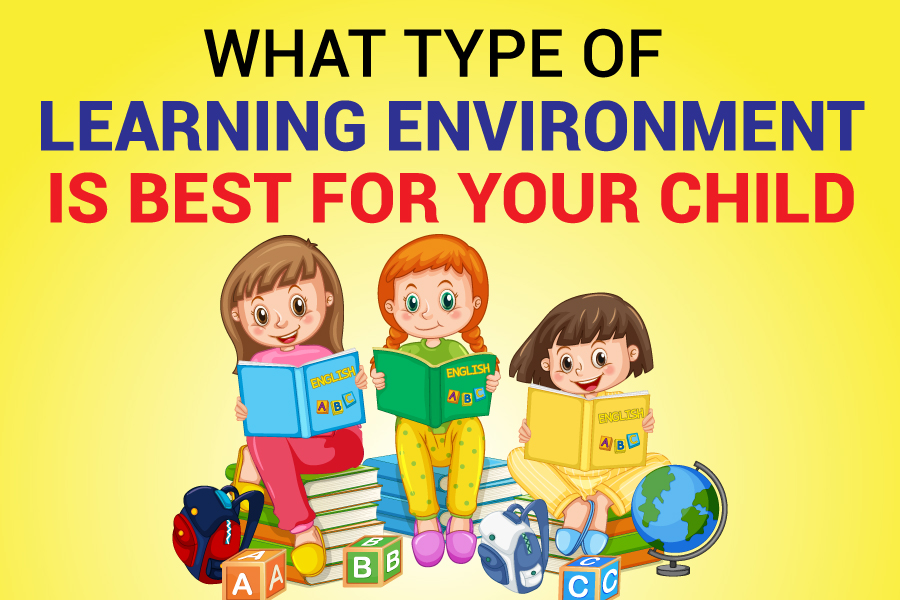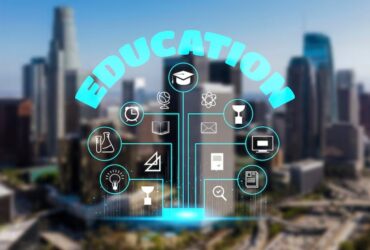Choosing What Type Of Learning Environment Is Best For Your Child can feel confusing at first, especially when all you want is for your child to feel safe, calm, and supported. Every child learns in their own rhythm, and the right setting gives them the comfort to try, make mistakes, and grow without pressure. When the environment matches their personality and pace, your child begins to build confidence naturally. They feel more willing to participate, ask questions, and stay engaged because the space feels gentle and welcoming rather than overwhelming.
Parents often worry about finding the “perfect” choice, but what your child truly needs is a space where they feel understood and valued. Some children work well with structure, others thrive with more movement and hands-on tasks, and many enjoy a warm mix of both. This guide breaks things down in a simple, parent-friendly way so you can choose a learning environment that supports your child’s comfort, emotional balance, and long-term growth.
Warm Parent-Friendly Overview of Learning Environments
Parents often feel anxious about making the “right” choice, but learning environments are not permanent commitments. Children grow rapidly, and the environment that supports them well at age five may be different from the one they need at age nine. The most valuable thing parents can do is pay attention to how their child responds to their current setting. Notice their after-school mood. Do they come home cheerful, calm, talkative, or drained? Do they share stories about friends, activities, or moments they enjoyed? Or do they seem quiet, overwhelmed, or resistant to returning the next day? These emotional signs reveal much more than academic reports. Even small changes in mood can signal whether an environment supports or suppresses a child’s natural abilities. Schools and classrooms vary widely in teaching style, pace, and structure, and each child will react differently. Trust that you can adjust the environment as your child changes. What matters most is staying tuned into their emotional cues and making choices that prioritize comfort, balance, and happiness.
What Shapes an Ideal Learning Environment?
Emotional Safety First
Children need to feel emotionally steady before they can learn effectively. When a space feels calm and supportive, children relax enough to participate, ask questions, and try new tasks without fear. Emotional safety creates the foundation for confidence. A child who feels secure becomes more willing to share ideas, make mistakes, and explore new challenges with curiosity rather than hesitation.
Predictable Routines
Consistent routines help children understand what comes next, easing stress and building trust in the learning space. When the day follows clear patterns, children settle in faster, stay focused longer, and feel more comfortable engaging. Predictability doesn’t limit creativity—it simply gives children a rhythm they can rely on, which makes learning smoother.
Physical Comfort
Simple environmental factors can change how well a child concentrates. Soft lighting, manageable noise levels, comfortable seating, and an organized layout all support long attention spans. When a space feels physically gentle, children stay engaged without feeling overwhelmed.
Supportive Adults
Caring teachers shape the emotional climate of the classroom. When adults respond with patience, encouragement, and genuine attention, children feel understood and valued. This sense of connection strengthens self-esteem and makes learning feel welcoming rather than stressful.
What Should Parents Look For?
A child’s ideal learning environment should mirror their natural rhythm, comfort level, and personality. Parents can observe small but meaningful signals-how their child behaves during visits, whether the classroom energy feels calm or chaotic, and how comfortably the child interacts with the space. The goal is not to judge every detail but to sense whether the environment gently supports curiosity, confidence, and emotional ease. When a space respects a child’s pace and gives them room to grow without pressure, learning becomes smoother and far more enjoyable. Paying attention to how relaxed, engaged, or overwhelmed your child seems can guide you toward the right choice.
Key things to look for:
- Calm atmosphere: A space free from overwhelming noise or constant stimulation
- Teacher warmth: Gentle communication, patience, and encouraging interactions
- Flexible options: Areas for movement, hands-on tasks, and quiet reflection
- Children’s reactions: Signs of comfort, smiles, curiosity, or eagerness to return
- Accessible materials: Tools children can use independently
- Balance of independence and guidance: Clear structure without rigidity
How to Match School Types With Your Child’s Needs
Children learn in different ways, and each school model supports its own strengths. Traditional classrooms often work well for children who enjoy structure, predictable routines, and clear direction. These environments provide steady schedules and step-by-step instruction, helping children who feel most comfortable when they know exactly what comes next. They thrive when the day follows a familiar rhythm and expectations are consistent.
Hands-on or Montessori-inspired settings fit children who learn through movement, exploration, and tactile experiences. These environments allow them to choose materials, work independently, and follow their curiosity at a pace that feels natural. Children with high energy or strong independence often feel more at ease in spaces where they can move freely and make meaningful choices.
Some children flourish in social or collaborative settings. Reggio Emilia or project-based classrooms support verbal learners who grow through discussion, teamwork, and shared problem-solving. These spaces encourage creativity, expression, and communication.
Blended or hybrid models support children who need both structure and flexibility. Technology-supported lessons give shy learners more time to process, and interactive tools help children who benefit from visual reinforcement. When you think about “What Type Of Learning Environment Is Best For Your Child”, the most important factor is how calm, supported, and confident they feel in the space.
Factors To Consider When Choosing a Learning Environment for Your Child
Choosing the right learning environment means looking beyond academics and considering what truly supports your child’s growth. Start with your child’s learning style. Some children focus best in structured classrooms, while others feel more comfortable in settings that encourage movement, choice, and hands-on activities. Many families also rely on private learning assessments to understand their child’s strengths, challenges, and preferred ways of learning.
It’s equally important to consider social and emotional development. A warm, encouraging environment helps children build confidence, manage emotions, and form positive relationships. Make sure the school’s philosophy aligns with your family’s values-whether you prefer traditional instruction, holistic approaches, or project-based learning.
Resources also play a role. Spaces like libraries, creative studios, science labs, and outdoor areas enrich your child’s experience and support varied interests. Finally, consider how much parental involvement the school encourages, as strong communication can create a more connected, supportive learning journey.
Long-Term Benefits of Choosing the Right Environment
When a learning environment aligns with your child’s natural rhythm, the long-term benefits unfold gradually but meaningfully. Children begin to trust their abilities because daily tasks feel achievable rather than overwhelming. This confidence becomes the foundation for how they handle challenges later in life, both in school and beyond. A well-matched environment also strengthens emotional resilience. When children feel safe, understood, and supported, they learn to manage frustration, recover from setbacks, and try again with curiosity instead of fear. Over time, this nurtures a steady sense of inner calm.
Socially, the right environment helps children communicate better, form healthy friendships, and express themselves more comfortably. Academically, they develop stronger focus, better habits, and a genuine interest in learning. These skills grow because the space encourages progress without pressure. As children mature, this balance between support and independence helps them become confident thinkers and self-reliant learners. The right environment doesn’t just improve school performance-it shapes your child’s identity, stability, and long-term well-being.
Conclusion
A nurturing learning environment becomes a steady anchor as your child grows. When the space honors their pace and personality, they feel confident enough to try new ideas without fear of making mistakes. This sense of comfort strengthens internal motivation, helping them meet challenges with curiosity rather than hesitation. Over time, the right environment supports emotional balance, communication skills, and healthy independence. It nurtures both academic growth and personal development, giving your child the resilience they need to handle successes and setbacks. When you understand what type of learning environment is best for your child, you give them a foundation where they feel capable, valued, and ready to thrive in their own way.
FAQs
How do I know if my child is in the right learning environment?
Your child should come home calm, confident, and willing to talk about their day. Positive energy, steady focus, and comfort are strong signs the environment suits them.
What if my child struggles in their current classroom?
Struggling doesn’t mean your child is failing. It may simply mean the environment’s pace, structure, or expectations don’t match their needs, and a different setup may help.
Can learning environments affect behavior?
Absolutely. Supportive, calm spaces help children regulate emotions, while stressful or overwhelming settings can trigger frustration, withdrawal, or sudden behavioral changes.
Should I choose structure or flexibility?
Match it to your child’s personality. Some children thrive on routine and predictability, while others do better with movement, exploration, and hands-on learning freedom.
Do all children benefit from the same environment?
No. Each child learns differently. The ideal environment supports their temperament, comfort level, and natural curiosity rather than forcing a single approach on everyone.












































Leave a Reply